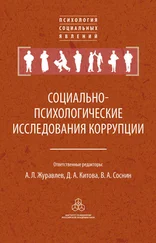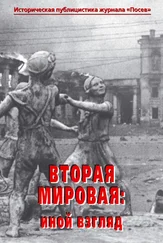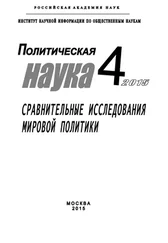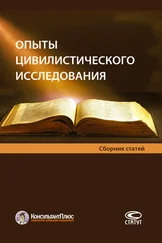J. Ratzinger, Jesus of Nazareth (trans. A. J. Walker; New York: Doubleday, 2007), с. 218–238; M. Hengel and A. M. Schwemer, Jesus und das Judentum (GfC 1; Tübingen: Mohr Siebeck, 2007), с. 237–240. Ср.: S. Freyne, «Jesus and the Galilean Am ha-‘Arets: Fact, Johannine Irony or Both?» John, Jesus, and History , ed. Anderson, Just, and Thatcher, 2:139–154.
Tout court (фр.) – просто-напросто. – Прим. ред.
S. Byrskog, Story as History – History as Story: The Gospel Tradition in the Context of Ancient Oral History (WUNT 123; Tübingen: Mohr Siebeck, 2000), с. 186–190.
S. Mason, «Contradiction or Counterpoint? Josephus and Historical Method», RRJ 6 (2003): 145–188; ср.: Z. Rodgers, ed., Making History: Josephus and Historical Method (JSJSup 110; Leiden: Brill, 2007).
S. Freyne, «Die soziale Welt Galiläas aus der Sicht des Josephus» в кн.: Jesus und die Archäologie Galiläas (ed. C. Claussen and J. Frey; BThSt 87; Neukirchen-Vluyn: Neukirchener Verlag, 2008), с. 75–92.
E. P. Sanders, Judaism: Practice and Belief, 63 BCE–66 CE (Philadelphia: Trinity Press International, 1992); ср.: S. Freyne , Jesus a Jewish Galilean: A New Reading of the Jesus Story (London: T&T Clark, 2005), с. 1–23.
G. W. E. Nickelsburg, Jewish Literature between the Bible and the Mishnah (2 nded.; Minneapolis: Fortress, 2005).
B. G. Wright III and L. M. Wills, eds., Conflicted Boundaries in Wisdom and Apocalypticism (SBLSymS 35; Atlanta: Society of Biblical Literature, 2005).
Peter B. Machinist, «Outsiders or Insiders: The Biblical View of Emergent Israel and Its Contexts», The Other in Jewish Thought and History: Constructions of Jewish Culture and Identity (ed. L. J. Silberstein and R. L. Cohn; New York: New York University Press, 1994), с. 35–60.
Albrecht Alt, Die Landnahme der Israeliten in Palästina (Reformationsprogramm der Universität Leipzig; Leipzig: Druckerei der Werkgemeinschaft, 1925); repr.: Kleine Schriften zur Geschichte des Volkes Israel (3 vols.; Munich: Beck, 1953–1959), 1:89–125; ET: «The Settlement of the Israelites in Palestine», Essays in Old Testament History and Religion (trans. R. A. Wilson; Garden City, N. Y.: Doubleday, 1968), с. 178–221; idem, «Erwägungen über die Landnahme der Israeliten in Palästina», PJB 35 (1939): 8–63, repr.: Kleine Schriften, 1:126–175; Martin Noth, The History of Israel (trans. rev. Peter R. Ackroyd; 2 nded.; London: Adam & Charles Black, 1960), с. 68–84.
George Mendenhall, «The Hebrew Conquest of Palestine», BA 25 (1962): 66–87; Norman K. Gottwald, The Tribes of Yahweh: A Sociology of the Religion of Liberated Israel, 1250–1050 BCE (Maryknoll, N. Y.: Orbis, 1979; repr., Sheffield: Sheffield Academic Press, 1999).
Lawrence E. Stager, «Response», Biblical Archaeology Today: Proceedings of the International Congress on Biblical Archaeology, Jerusalem, April 1984 (Jerusalem: Israel Exploration Society, 1985), с. 83–87; «The Archaeology of the Family in Ancient Israel», BASOR 260 (1985): 1–35; idem, «Forging an Identity: The Emergence of Ancient Israel», The Oxford History of the Biblical World (ed. M. D. Coogan; New York: Oxford University Press, 1998), с. 123–175.
Примечательное исключение – труд Рэйчел Хэверлок: Rachel S. Havrelock, «The Jordan River: Crossing a Biblical Boundary» (Ph.D. diss., University of California, Berkeley, 2004); впоследствии диссертация опубликована в виде книги: Rachel S. Havrelock, River Jordan: The Mythology of a Dividing Line (Chicago: University of Chicago Press, 2011). Здесь все отсылки – к диссертации.
В качестве наиболее интересных и актуальных примеров из библеистики см.: Harold Brodsky, «The Jordan – Symbol of Spiritual Transition», BRev 8.3 (1992): 34–43, 52; David Jobling, «‘The Jordan a Boundary’: Transjordan in Israel’s Ideological Geography», в кн.: The Sense of Biblical Narrative II: Structural Analyses in the Hebrew Bible (JSOTSup 39; Sheffield: JSOT Press, 1986), с. 88–133, 142–147; Moshe Weinfeld, «The Extent of the Promised Land – the Status of Transjordan», Das Land Israel in biblischer Zeit (ed. G. Strecker; Göttingen: Vandenhoeck & Ruprecht, 1983), с. 59–75; John A. Beck, «Geography as Irony: The Narrative-Geographical Shaping of Elijah’s Duel with the Prophets of Baal (1 Kings 18)», SJOT 17 (2003): 291–302; Susan Tower Hollis, «Ancient Israel as the Land of Exile and the ‘Otherworld’ in Ancient Egyptian Folktales and Narratives», Boundaries of the Ancient Near Eastern World: A Tribute to Cyrus H. Gordon (ed. M. Lubetski, C. Gottlieb, and S. Keller; JSOTSup 273; Sheffield: Sheffield Academic Press, 1998), с. 320–337.
Rainer Riesner, «Bethany Beyond the Jordan (John 1:28): Topography, Theology and History in the Fourth Gospel», TynBul 38 (1987): 29–63, цит. с. 32–34; idem, Bethanien jenseits des Jordan: Topographie und Theologie im Johannes-Evangelium (SBAZ 12; Giessen: Brunnen, 2002).
Такое прочтение принято в большинстве англоязычных редакций Библии. – Прим. ред.
Jeremy M. Hutton, «‘Bethany Beyond the Jordan’ in Text, Tradition, and Historical Geography», Bib 89 (2008): 305–328.
Толк. Ин 6.40.204.
Lectio difficilior (лат. «трудное чтение») – принцип текстологического анализа, по которому из нескольких сохранившихся вариантов подлинным считается наиболее трудный для понимания, поскольку переписчики, как правило, упрощали текст. – Прим. ред.
Riesner, «Bethany», с. 33–34; idem, Bethanien , с. 14; поддержка: Michele Piccirillo, «The Sanctuaries of the Baptism on the East Bank of the Jordan River», Jesus and Archaeology (ed. J. H. Charlesworth; Grand Rapids: Eerdmans, 2006), с. 433–443, цит. с. 438.
Инклюзио – литературный прием, при котором конец фрагмента текста делается похожим на его начало. – Прим. ред.
Hutton, «Bethany», с. 307; см. также: Robert T. Fortna, «Theological Use of Locale in the Fourth Gospel», Gospel Studies in Honor of Sherman Elbridge Johnson (ed. M. H. Shepherd Jr. and E. C. Hobbs; AThRSupp 3; London: SCM, 1974), с. 58–95, цит. с. 67–68; idem, The Gospel of Signs: A Reconstruction of the Narrative Source Underlying the Fourth Gospel (SNTSMS 11; Cambridge: Cambridge University Press, 1970), с. 174. В качестве критики гипотезы см.: Hartwig Thyen, «Liegt dem Johannesevangelium eine Semeia-Quelle zugrunde?», в кн.: Studien zum Corpus Iohanneum (WUNT 214; Tübingen: Mohr Siebeck, 2007), с. 443–452; G. van Belle, The Signs Source in the Fourth Gospel: Historical Survey and Critical Evaluation of the Semeia Hypothesis (BETL 116; Leuven: Peeters, 1994), особ. с. 370–377.
Читать дальше
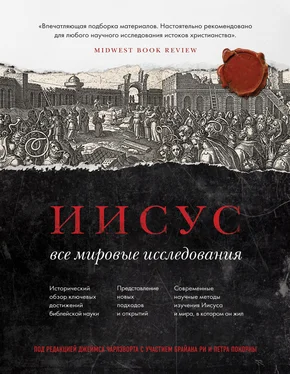
![Коллектив авторов - Что мы думаем о машинах, которые думают [Ведущие мировые ученые об искусственном интеллекте]](/books/31211/kollektiv-avtorov-chto-my-dumaem-o-mashinah-kotorye-thumb.webp)


